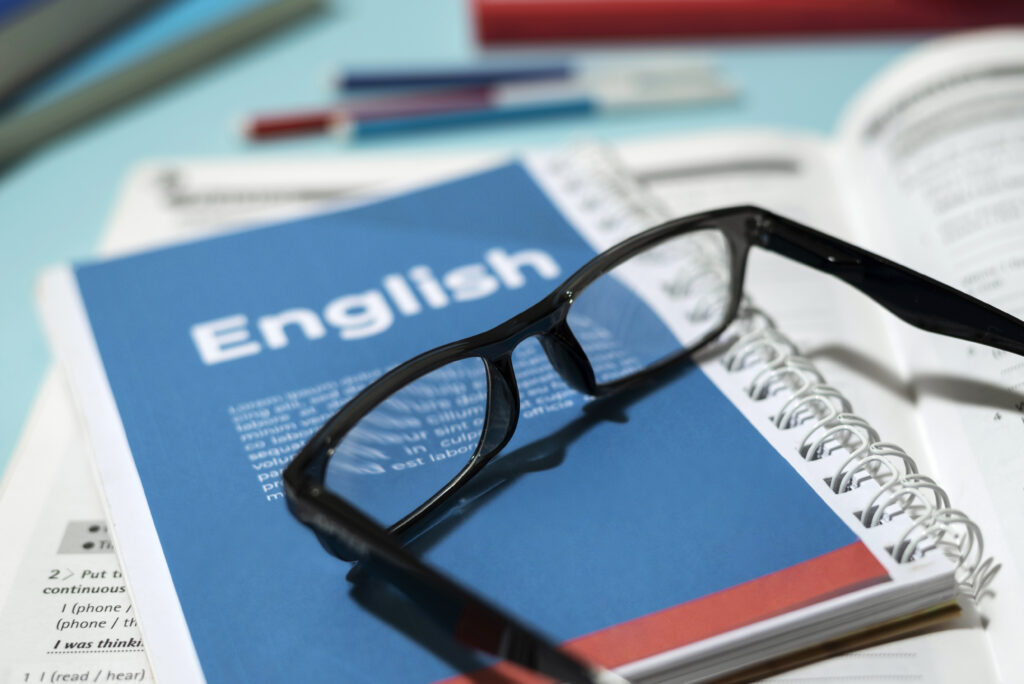Est. reading time: 4 minutes

Punctuation marks are a set of symbols that indicate a pause or an emphasis. They separate or link sentences and clarify the meaning of a text—punctuation marks aid in expressing the structure and tone of a sentence or a piece of writing.
Types of Punctuation Marks
The English language makes use of several punctuation marks. Among these punctuation marks are the full stop, comma, semicolon, colon, quotation marks, apostrophe, brackets, parentheses, question mark, exclamation mark, hyphen, ellipsis, and slash.
1. Full Stop (.)
The full stop, or period, is the most commonly used punctuation mark in English. It shows the end of a sentence and is used in abbreviations. Examples are:
- The rain washed away most of the crops on the old man’s farm.
- Creative writing is an aspect of writing that requires the use of one’s imagination to come up with characters and interesting storylines.
- Miss Johnson A. Bidemi did not come to the general meeting.
It is important to note that when using a full stop at the end of a sentence, there is no need for space between the last letter or word and the full stop. However, when starting a new sentence, there should be space left between the full stop and the first letter or word of the new sentence.
2. Comma (,)
A comma separates words or clauses in a sentence and items on a list. It also represents a pause or break in between texts. A comma separates independent clauses in a sentence when they are connected by a conjunction and can be placed after the introducing word or phrase of a sentence and before a question tag. Furthermore, it separates dates and communicates a location. Examples are:
- After eating lunch, the two children went off to the field.
- I bought salt, pepper, meat, curry, and thyme on my way back home.
- I love football, but my sister prefers basketball.
- Mary was born on May 5, 2021.
- Last week, I was in Accra, Ghana.
- You did not lock the doors, did you?
3. Colon (:)
A colon introduces a list or an explanation that gives further information on the word preceding the colon. It separates titles and subtitles and is used in plays to indicate words spoken by a character. Examples are:
- There are four types of bread on the menu: wheat bread, coconut bread, chocolate bread, and white bread.
- Poaching: Man’s contribution to extinction.
- Juliet: O Romeo, Romeo, wherefore art thou Romeo? Deny thy father and refuse thy name. (Excerpt taken from William Shakespeare’s Romeo and Juliet).
It is important to note that a colon should not be placed after words or phrases like ‘for example’, ‘include’, and ‘such as’.
4. Semicolon (;)
The semicolon is one of the most misused punctuation types in English. It separates independent clauses and can replace conjunctions used to join two closely related independent clauses. It also separates items on a list that contains commas. Examples are:
- They borrowed my picnic basket; they are going on a picnic tomorrow.
- We invited Mark, your second cousin; Julius, your uncle; Cornelius, your twin brother; and Rufus, your nephew.
5. Quotation Mark (“”)
Quotation marks are punctuation marks that show the beginning and end of a quotation, to show dialogue and to quote certain titles. They can be used to display a person’s exact words as said or written. Examples are:
- In his poem, “The Leader And The Led”, Niyi Osundare explores the leadership trend in African countries with the use of animals.
- “I didn’t eat breakfast,” She answered him.
- “He’s more myself than I am. Whatever our souls are made of, his and mine are the same.” (Excerpt taken from Emily Bronte’s Withering Hearts.)
6. Apostrophe (‘)
This punctuation mark signifies contractions, possession or ownership and indicates omitted letters or numbers. Contractions are words made by combining two words or by shortening a word. Contractions include words like can’t, wouldn’t, I’ve, etc. Other examples showing the usage of an apostrophe include:
- That is Bola’s
- Class of ‘22.
- Don’t walk late at night.
7. Parentheses ()
These are used to add details or clarifications that may or may not be necessary to the main idea of the sentence. They can be used to provide the full meaning of abbreviations. They are used in mathematical expressions to indicate multiplication. Examples are:
- The teacher asked the boys (Joel, Biyi and Akanni) to sweep the class as punishment.
- The CFO (Chief Finance Officer) was arrested for embezzlement of funds.
- (4+11)(10-8)= 17
8. Brackets []
Brackets or square brackets are used to add extra information or clarifications to a quotation. They are used to show comments made by a writer as well as add emphasis to a text. Examples are:
- Ladoke had submitted his assignment when he discovered that he [Julius] had not returned the second page of his assignment.
- He [the president] signed the contract and adjourned the meeting.
9. Question Mark (?)
A question mark is placed at the end of sentences to express questions or make inquiries. Examples are:
- You are not going to Lade’s party, are you?
- Did you buy the materials from the market like I told you to?
- Why has she not been attending my classes?
10. Exclamation Mark (!)
An exclamation mark is a punctuation mark placed at the end of sentences that express strong feelings or emotions. An exclamation mark represents emphasis in writing. Examples are:
- “Get out!” He shouted.
- What a beautiful performance!
11. Hyphen (-)
A hyphen is a punctuation mark that joins words together to form compound words, to join prefixes to words or to join letters to words. Examples are:
- He’s wearing a stolen T-shirt.
- The editor-in-chief signed out of work early.
- Tallia has no self-control.
12. Slash (/)
This is a punctuation mark that separates two choices or alternatives. It also separates the lines of poetry. Examples are:
- He/she will wash the dishes after dinner.
- Do not go gentle into that good night/ Old age should burn and rave at close of day/ Rage, rage against the dying of the light. (Excerpt taken from Dylan Thomas’ Do Not Go Gentle Into That Good Night).
13. Ellipsis (…)
This punctuation mark symbolises a pause in a sentence or indicates an omission or an incomplete thought. Examples are:
- They thought they were going to…
- Ranvier used to be full of fishermen until…
Conclusion
Punctuation marks help to indicate the structure of a sentence and make writing more readable. I hope that this piece helped simplify the functions of punctuation marks. Check out our website to read more articles that will help improve your writing and communication.

